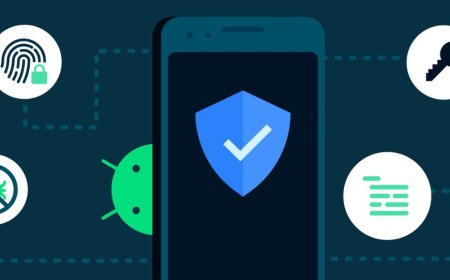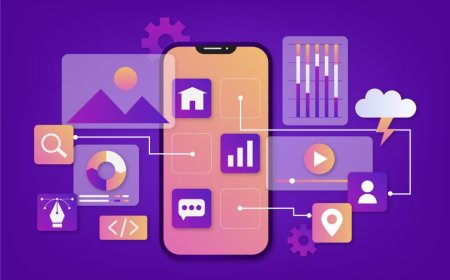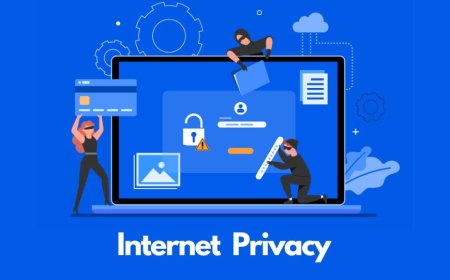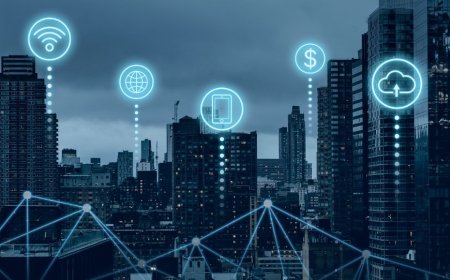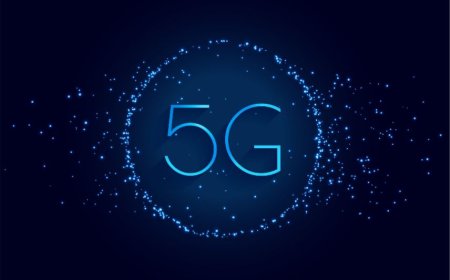5G Revolution: Unleashing the Power of Next-Gen Internet
Tectoks brings you the future of the internet with the 5G revolution. Explore the endless potential of next-gen connectivity and stay ahead of the game.
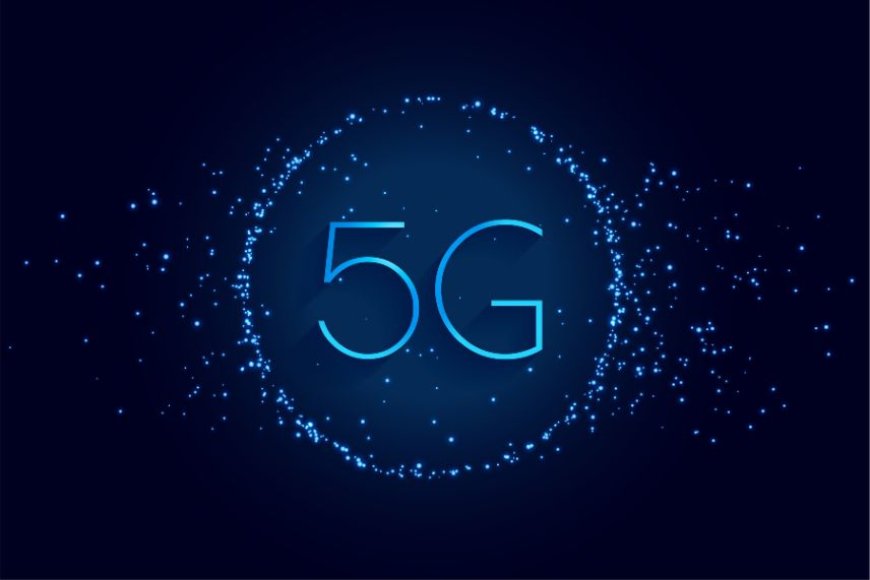
Table of Contents:
-
Introduction
-
5G Network Expansion
-
5G Technology Impact
-
5G Infrastructure Development
-
Conclusion
1. Introduction
Welcome to this blog post on 5G technology. In this post, you will learn about the innovation, expansion, impact, and applications of 5G technology, which is the fifth generation of cellular networks. You will also discover how 5G technology differs from previous generations of wireless communication, such as 4G, 3G, and 2G, and what benefits it offers to users and industries. Finally, you will explore the current state and prospects of the 5G network, the potential impact of 5G on various industries and sectors, and the challenges and opportunities of 5G infrastructure.
So, what exactly is 5G and how does it function? According to Qualcomm, one of the leading companies in 5G development, 5G is a new global wireless standard that is designed to connect virtually everyone and everything together, including machines, objects, and devices. 5G enables a new kind of network that is meant to deliver higher multi-Gbps peak data speeds, ultra-low latency, more reliability, massive network capacity, increased availability, and a more uniform user experience to more users. 5G uses a combination of low-band, mid-band, and high-band frequencies, including millimeter waves, to provide more bandwidth and spectrum for data transmission. 5G also uses advanced technologies, such as massive MIMO, beamforming, network slicing, and edge computing, to enhance the performance and efficiency of the network.
How is 5G different from previous generations of wireless communication? According to Wikipedia, the previous generations of wireless communication are 1G, 2G, 3G, and 4G, which were introduced in the 1980s, 1990s, 2000s, and 2010s, respectively. 1G delivered analog voice, 2G introduced digital voice, 3G brought mobile data, and 4G LTE ushered in the era of mobile broadband. 5G is different from these generations in that it is a unified, more capable, and more flexible air interface that can support a wide range of services and applications, such as improved mobile broadband, enormous IoT, and mission-critical communications. 5G is also different in that it can leverage both existing and new infrastructure, such as small cells, macrocells, and satellites, to provide ubiquitous and seamless connectivity.
What are the main benefits of 5G? According to PwC India, 5G technology offers many benefits to users and industries, such as:
-
Faster speed: 5G can deliver peak data speeds up to 10 Gbps, which is 100 times faster than 4G and 10 times faster than the fastest home broadband service. This means that users can download and upload large files, stream high-quality videos, and enjoy immersive VR and AR experiences with minimal buffering and lag.
-
Lower latency: 5G can reduce the latency or the time it takes for data to travel from one point to another, to as low as 1 millisecond, which is 10 times lower than 4G and 100 times lower than the human reaction time. This means that users can enjoy real-time and interactive applications, such as cloud gaming, remote surgery, and autonomous driving, with high responsiveness and accuracy.
-
Higher capacity: 5G can support up to 1 million devices per square kilometer, which is 10 times more than 4G and 100 times more than 3G. This means that users can connect more devices, such as smartphones, tablets, laptops, wearables, sensors, etc., to the network without compromising the quality of service.
-
Better reliability: 5G can provide up to 99.999% availability, which is 10 times higher than 4G and 100 times higher than 3G. This means that users can rely on the network to deliver consistent and uninterrupted service, even in high-demand and critical situations, such as public safety, emergency response, and industrial automation.
-
More flexibility: 5G can enable more flexibility and customization of the network by using technologies such as network slicing, which allows the network to be divided into multiple virtual networks that can serve different purposes and requirements, such as speed, latency, security, etc. This means that users can access the network that best suits their needs and preferences, and that network operators can optimize the network resources and efficiency.
In this blog post, you will learn more about these benefits and how they can transform various industries and sectors, such as healthcare, education, entertainment, manufacturing, agriculture, transportation, and more. You will also learn about the current state and prospects of the 5G network, such as the deployment status, the coverage area, the market size, and future trends. You will also learn about the challenges and opportunities of 5G infrastructure, such as the cost, the regulation, the security, and the innovation.
I hope you are excited and curious to learn more about 5G technology and its impact and applications. In the next section, we will dive into the current state and prospects of the 5G network. Stay tuned!
2. 5G Network Expansion
5G network expansion is one of the most important and exciting developments in the field of wireless communication. 5G is the fifth generation of cellular networks that promises to deliver faster speed, lower latency, higher capacity, better reliability, and more flexibility than previous generations. 5G is expected to enable a new kind of network that can connect virtually everyone and everything together, including machines, objects, and devices. 5G is also expected to transform various industries and sectors, such as healthcare, education, entertainment, manufacturing, agriculture, transportation, and more.
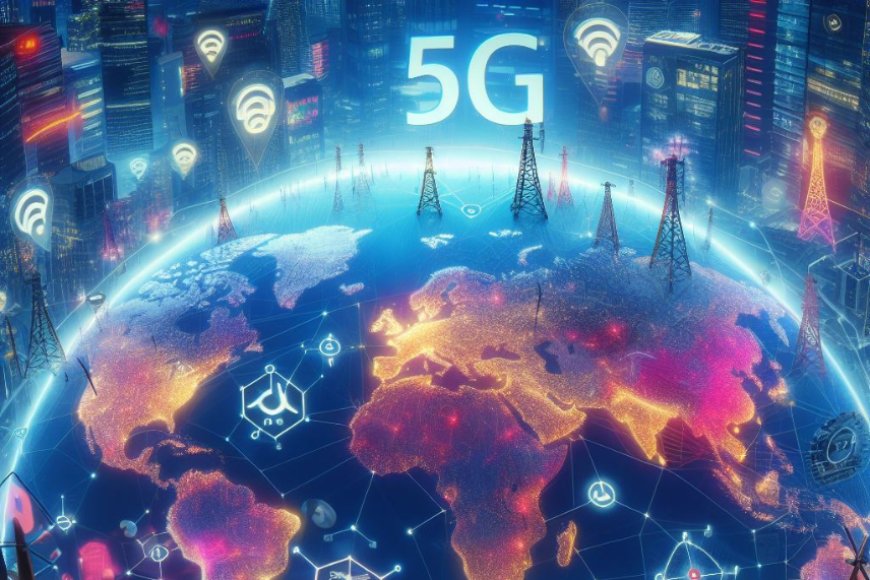
The current status of 5G network deployment around the world is that there are 287 commercial 5G networks in 128 countries as of November 30, 2022, according to the Ookla® 5G Map. This number is anticipated to grow to 425 by 2025, reflecting significant investments in 5G infrastructure worldwide.
Some of the countries, regions, and operators that have launched or planned to launch 5G services are:
-
China: China is the world’s largest 5G market, with more than 400 million 5G subscribers, 1.2 million 5G base stations, and 200 million 5G devices as of September 2022. China’s three major operators, China Mobile, China Telecom, and China Unicom, have deployed 5G services in more than 300 cities across the country, covering both urban and rural areas. China is also leading the development of 5G applications in various fields, such as smart cities, industrial internet, autonomous driving, remote healthcare, and education.
-
United States: The United States is the second-largest 5G market, with more than 200 million 5G subscribers, 400,000 5G base stations, and 150 million 5G devices as of September 2023. The United States’ four major operators, Verizon, AT&T, T-Mobile, and Dish, have deployed 5G services in more than 200 cities across the country, using a mix of low-band, mid-band, and high-band frequencies, including millimeter waves. The United States is also advancing the innovation of 5G technologies and standards, such as Open RAN, 5G NR, and 6G.
-
India: India is the third-largest 5G market, with more than 100 million 5G subscribers, 300,000 5G base stations, and 100 million 5G devices as of September 2022. India’s two major operators, Reliance Jio and Bharti Airtel, have launched 5G services in more than 40 cities across the country, using the mid-band frequency of 3.5 GHz. India is also exploring the potential of 5G applications in various sectors, such as agriculture, healthcare, education, and entertainment.
The following map or chart shows the 5G coverage and penetration of different markets, based on the data from the Global Mobile Suppliers Association (GSA) and the International Telecommunication Union (ITU):
[5G coverage and penetration of different markets]
Some of the key drivers and barriers for 5G network expansion are:
-
Spectrum availability: Spectrum is the radio frequency range that is used for wireless communication. Spectrum availability is a key driver for 5G network expansion, as it determines the speed, capacity, and coverage of the network. Different frequency bands have different characteristics and trade-offs, such as low-band (below 1 GHz), which offers wide coverage but low speed; mid-band (1-6 GHz), which offers balanced coverage and speed; and high-band (above 6 GHz), which offers high speed but limited coverage. 5G network expansion requires sufficient and harmonized spectrum allocation across different regions and countries, which can be challenging due to the limited and fragmented nature of the spectrum resource as well as the regulatory and political issues involved.
-
Regulatory policies: Regulatory policies are the rules and regulations that govern the wireless communication industry. Regulatory policies are another key driver for 5G network expansion, as they influence the market structure, competition, innovation, and consumer protection of the industry. Regulatory policies can facilitate or hinder 5G network expansion, depending on the level of support, coordination, and flexibility they provide to the operators, vendors, and users. Some of the regulatory policies that affect 5G network expansion are spectrum licensing, network sharing, security standards, data privacy, and net neutrality.
-
Consumer demand: consumer demand is the willingness and ability of the users to adopt and use 5G services and applications. Consumer demand is a key driver for 5G network expansion, as it reflects the value proposition and market potential of 5G. Consumer demand can stimulate or constrain 5G network expansion, depending on the level of awareness, satisfaction, and affordability they have for 5G. Some of the factors that affect consumer demand are user expectations, user experience, user behavior, and user income.
-
Cost: Cost is the amount of money and resources that are required to deploy and operate 5G networks and services. Cost is a key barrier to 5G network expansion, as it determines the profitability and sustainability of the industry. Cost can limit or enable 5G network expansion, depending on the level of investment, efficiency, and revenue they generate for the operators, vendors, and users. Some of the factors that affect cost are infrastructure, equipment, maintenance, and pricing.
Some of the analysis and commentary on the 5G network expansion are:
-
Leading and lagging markets: The 5G network expansion is uneven and diverse across different markets, depending on their readiness, maturity, and competitiveness. Some of the leading markets are China, the United States, and South Korea, which have achieved high levels of 5G coverage, penetration, and performance, as well as 5G innovation and application. Some of the lagging markets are Africa, Latin America, and the Middle East, which have low levels of 5G coverage, penetration, and performance, as well as 5G innovation and application. Some of the emerging markets are India, Brazil, and Indonesia, which have moderate levels of 5G coverage, penetration, and performance, as well as 5G innovation and application.
-
Best practices and lessons learned: The 5G network expansion can benefit from the best practices and lessons learned from the successful and unsuccessful experiences of different markets, operators, and vendors. Some of the best practices are: leveraging existing infrastructure and spectrum; adopting open and interoperable standards and technologies; fostering collaboration and cooperation among stakeholders; promoting innovation and experimentation; and addressing user needs and preferences. Some of the lessons learned are: avoiding spectrum fragmentation and duplication; balancing network quality and cost; ensuring network security and privacy; and overcoming user resistance and inertia.
-
Future trends and projections: The 5G network expansion is expected to continue and accelerate in the coming years, driven by the increasing demand, supply, and innovation of 5G. Some of the future trends are: expanding 5G coverage and penetration to more regions and countries, especially in rural and remote areas; enhancing 5G performance and efficiency by using more advanced and diverse technologies, such as mmWave, Open RAN, 5G NR, and 6G; exploring 5G applications and opportunities in various industries and sectors, such as healthcare, education, entertainment, manufacturing, agriculture, transportation, and more; and addressing 5G challenges and risks, such as spectrum scarcity, regulatory uncertainty, security threats, and environmental impacts. Some of the projections are: reaching 1.8 billion 5G subscribers, 2.8 billion 5G devices, and 10 million 5G base stations by 2025; generating $13.1 trillion of global economic output and 22.8 million new jobs by 2035; and achieving 5G speeds up to 10 Gbps, 5G latency as low as 1 ms, and 5G capacity up to 1 million devices per square kilometer.
I hope this explanation helps you understand the 5G network expansion better. If you have any questions, please contact me.
3. 5G Technology Impact
5G technology impact is the effect and influence of 5G technology on various industries and sectors, such as healthcare, education, entertainment, manufacturing, transportation, and more. 5G technology can transform these industries and sectors by enabling or enhancing new applications and use cases that require high-speed, low-latency, high-capacity, and reliable connectivity.

Here are some examples or case studies of how 5G technology can impact different industries and sectors:
-
Healthcare: 5G technology can improve the quality and accessibility of healthcare services by enabling remote surgery, telemedicine, remote monitoring, and wearable devices. For example, in 2022, a surgeon in China successfully performed a remote surgery on a patient in a different city using a 5G network and a robotic arm. This demonstrated the potential of 5G technology to overcome the limitations of distance and time and to provide more efficient and safe healthcare solutions.
-
Education: 5G technology can enhance the learning and teaching experience by enabling online learning, virtual reality, augmented reality, and interactive content. For example, in 2022, a school in Finland launched a 5G-powered virtual reality classroom that allowed students to immerse themselves in different environments and scenarios, such as ancient Rome, outer space, and underwater. This showed the potential of 5G technology to create more engaging and personalized learning opportunities and to bridge the digital divide.
-
Entertainment: 5G technology can revolutionize the entertainment industry by enabling immersive and interactive media, such as cloud gaming, live streaming, holograms, and 3D video. For example, in 2022, a music festival in South Korea used 5G technology to create a holographic concert that featured live performances from artists in different locations as well as interactive features such as voting, chatting, and cheering. This illustrated the potential of 5G technology to create more innovative and social entertainment experiences and to expand the audience's reach.
-
Manufacturing: 5G technology can optimize the manufacturing process by enabling smart factories, industrial internet, robotics, and automation. For example, in 2022, a factory in Germany used 5G technology to connect and control over 1,000 machines and sensors, as well as to monitor and analyze production data in real-time. This demonstrated the potential of 5G technology to improve the efficiency, quality, safety, and sustainability of manufacturing operations and to enable new business models and services.
-
Transportation: 5G technology can improve the mobility and safety of transportation by enabling autonomous driving, connected vehicles, smart traffic, and intelligent transportation systems. For example, in 2022, a city in Japan used 5G technology to test a self-driving bus that communicated with other vehicles, pedestrians, and infrastructure, as well as to provide passengers with information and entertainment services This showed the potential of 5G technology to reduce congestion, pollution, and accidents and to provide more convenient and comfortable transportation options.
The benefits and challenges of 5G technology's impact are:
-
Benefits: 5G technology can provide many benefits to users and industries, such as:
-
Improved efficiency: 5G technology can increase the productivity and performance of various tasks and processes by reducing the time and resources required and by enabling more automation and optimization.
-
Improved quality: 5G technology can enhance the quality and reliability of various products and services by increasing the accuracy and consistency of the outcomes and by enabling more feedback and improvement.
-
Improved safety: 5G technology can reduce the risks and hazards of various activities and situations by increasing the visibility and control of the conditions and by enabling more prevention and protection.
-
Improved accessibility: 5G technology can expand the availability and affordability of various opportunities and resources by increasing the coverage and penetration of the network and by enabling more inclusion and diversity.
-
Challenges: 5G technology can also pose some challenges to users and industries, such as:
-
Security: 5G technology can increase the vulnerability and exposure of various data and systems by creating more entry points and targets for cyberattacks and by enabling more interception and manipulation of information.
-
Privacy: 5G technology can decrease the privacy and anonymity of various users and entities by creating more data and traces of their activities and behaviors and by enabling more collection and analysis of their information.
-
Ethical: 5G technology can raise some ethical and social issues and dilemmas by creating more conflicts and trade-offs between different values and interests and by enabling more influence and manipulation of decisions and actions.
-
Environmental: 5G technology can have some environmental impacts and implications by creating more energy consumption and emissions from the network and devices and by enabling more monitoring and management of natural resources and ecosystems.
Some of the analysis and commentary on the 5G technology impact are:
-
Adoption: The adoption of 5G technology varies across different industries and sectors, depending on their readiness, maturity, and competitiveness. Some of the industries and sectors that are most likely or ready to adopt 5G technology are those that have high demand and supply of data and connectivity, such as entertainment, media, and telecommunications, as well as those that have high potential and opportunity for innovation and differentiation, such as healthcare, education, and manufacturing. Some of the industries and sectors that are less likely or ready to adopt 5G technology are those that have low demand and supply of data and connectivity, such as agriculture, mining, and utilities, as well as those that have low potential and opportunity for innovation and differentiation, such as public services, retail, and hospitality.
-
Best practices and lessons learned: The impact of 5G technology can be maximized and optimized by following some best practices and lessons learned from the successful and unsuccessful experiences of different industries and sectors, such as:
-
Leveraging existing infrastructure and spectrum: 5G technology can be deployed and operated more efficiently and effectively by using the existing infrastructure and spectrum resources, such as fiber optic cables, small cells, and low-band frequencies, as well as by upgrading and integrating them with the new infrastructure and spectrum resources, such as mmWave, Open RAN, and 5G NR.
-
Adopting open and interoperable standards and technologies: 5G technology can be adopted and used more widely and easily by using open and interoperable standards and technologies, such as 3GPP, O-RAN, and 6G, as well as by collaborating and cooperating with other stakeholders, such as operators, vendors, regulators, and users, to ensure the compatibility and flexibility of the network and services.
-
Fostering innovation and experimentation: 5G technology can be leveraged and exploited more creatively and effectively by fostering innovation and experimentation, such as by exploring and testing new applications and use cases, such as remote surgery, cloud gaming, holograms, and smart factories, as well as by learning and improving from the feedback and results, such as by measuring and analyzing the performance and impact of the network and services.
-
Addressing user needs and preferences: 5G technology can be delivered and consumed more satisfactorily and successfully by addressing user needs and preferences, such as by understanding and anticipating the user expectations and demands, such as speed, latency, capacity, and reliability, as well as by providing and enhancing the user experience and value, such as by offering and customizing the network and services according to the user needs and preferences.
-
Opportunities and risks: The impact of 5G technology can create some opportunities and risks for users and industries, such as:
-
Opportunities: 5G technology can create some opportunities for users and industries, such as:
-
New markets and segments: 5G technology can create new markets and segments for users and industries, such as by enabling new products and services, such as VR, AR, and IoT, as well as by reaching new customers and users, such as in rural and remote areas.
-
New business models and strategies: 5G technology can create new business models and strategies for users and industries, such as by enabling new revenue streams and sources, such as network slicing, edge computing, and data monetization, as well as by enabling new competitive advantages and differentiation, such as network quality, service diversity, and customer loyalty.
-
New social and environmental benefits: 5G technology can create new social and environmental benefits for users and industries, such as by enabling new social and environmental solutions and improvements, such as telemedicine, online education, and smart agriculture, as well as by enabling new social and environmental awareness and responsibility, such as data privacy, digital inclusion, and green ICT.
-
Risks: 5G technology can also create some risks for users and industries, such as:
-
New threats and vulnerabilities: 5G technology can create new threats and vulnerabilities for users and industries, such as by exposing more data and systems to cyberattacks and breaches, such as malware, ransomware, and DDoS, as well as by exposing more information and activities to surveillance and interference, such as espionage, censorship, and propaganda.
-
New challenges and barriers: 5G technology can create new challenges and barriers for users and industries, such as by requiring more investment and resources to deploy and operate the network and services, such as infrastructure, equipment, and spectrum, as well as by requiring more regulation and governance to ensure the security and privacy of the network and services, such as standards, policies, and laws.
-
New ethical and social dilemmas: 5G technology can create new ethical and social dilemmas for users and industries, such as by creating more conflicts and trade-offs between different values and interests, such as efficiency vs. equity, innovation vs. regulation, and individual vs. collective, as well as by creating more influence and manipulation of decisions and actions, such as bias, discrimination, and addiction.
I hope this explanation helps you understand the impact of 5G technology better. If you have any questions, feel free to ask.
4. 5G Infrastructure Development
5G infrastructure development is the process and outcome of building and deploying the physical and virtual components and systems that enable and support 5G networks and services. 5G infrastructure is important for 5G deployment and performance, as it determines the speed, capacity, latency, reliability, and flexibility of the network and services.

5G infrastructure consists of four main domains: core network, radio access network, edge computing, and cloud computing. The following diagram or table shows the 5G infrastructure components and characteristics and how they work together to provide 5G services and features:
[5G infrastructure components and characteristics]
-
Core network: The core network is the central part of the 5G network that connects and controls the radio access network, edge computing, and cloud computing. The core network is responsible for providing network functions such as authentication, authorization, mobility management, session management, policy control, charging, and service orchestration. The core network is based on a service-based architecture, which means that the network functions are modular, virtualized, and distributed and can be accessed and invoked by other network functions through standardized interfaces and protocols. The core network can also support network slicing, which means that the network can be divided into multiple virtual networks that can serve different purposes and requirements, such as speed, latency, security, etc.
-
Radio access network: The radio access network is the part of the 5G network that connects and communicates with the user's devices, such as smartphones, tablets, laptops, etc. The radio access network consists of base stations, which are the physical devices that transmit and receive radio signals, and the radio interface, which is the logical link that defines the radio parameters and protocols. The radio access network can use different frequency bands, such as low-band, mid-band, and high-band, including millimeter waves, to provide different levels of coverage and performance. The radio access network can also use advanced technologies, such as massive MIMO, beamforming, and carrier aggregation, to enhance the efficiency and capacity of the network.
-
Edge computing: Edge computing is the part of the 5G network that provides computing and storage resources at the edge of the network, closer to the user's devices and applications. Edge computing is responsible for providing low-latency and high-reliability services, such as real-time analytics, artificial intelligence, and machine learning. Edge computing can also support local data processing and caching, which can reduce network management and improve the user experience. Edge computing can also support distributed cloud services, which can enable more scalability and flexibility in the network and services.
-
Cloud computing: Cloud computing is part of the 5G network that provides computing and storage resources in the cloud, which is a network of servers and data centers that are accessible via the internet. Cloud computing is responsible for providing high-performance and high-capacity services, such as big data, cloud gaming, and cloud storage. Cloud computing can also support centralized data processing and management, which can enable the security and privacy of the network and services. Cloud computing can also support hybrid cloud services, which can enable more integration and interoperability of the network and services.
The key challenges and opportunities for 5G infrastructure development are:
-
Technical challenges: Technical challenges are the difficulties and obstacles that arise from the design and implementation of the 5G infrastructure components and systems. Some of the technical challenges are:
-
Spectrum availability and allocation: Spectrum is the radio frequency range that is used for wireless communication. Spectrum availability and allocation are the challenges of ensuring that there is enough and harmonized spectrum for 5G network deployment and operation, especially in the high-band frequencies, such as millimeter waves, which have limited availability and require more coordination and regulation.
-
Network deployment and optimization: Network deployment and optimization are the challenges of ensuring that the 5G network components and systems are installed and configured properly and efficiently, especially in the radio access network, which requires more base stations and antennas, as well as more backhaul and front haul connections, to provide wider and denser coverage and performance.
-
Network security and resilience: Network security and resilience are the challenges of ensuring that the 5G network components and systems are protected and maintained from cyberattacks and failures, especially in the core network and edge computing, which are more exposed and vulnerable due to the increased complexity and decentralization of the network functions and services.
-
Operational challenges: Operational challenges are the difficulties and obstacles that arise from the management and operation of the 5G infrastructure components and systems. Some of the operational challenges are:
-
Network integration and interoperability: Network integration and interoperability are the challenges of ensuring that the 5G network components and systems can work together and with other networks and services, especially in edge computing and cloud computing, which require more standardization and coordination of the interfaces and protocols, as well as the compatibility and flexibility of the platforms and applications.
-
Network monitoring and maintenance: Network monitoring and maintenance are the challenges of ensuring that the 5G network components and systems can be monitored and maintained effectively and efficiently, especially in the radio access network and the core network, which requires more automation and optimization of the network functions and services, as well as more feedback and improvement of the network performance and quality.
-
Network slicing and orchestration: Network slicing and orchestration are the challenges of ensuring that the 5G network components and systems can support and provide network slicing, which is the ability to create and manage multiple virtual networks that can serve different purposes and requirements, especially in the core network and the radio access network, which requires more intelligence and control of the network functions and services, as well as more customization and personalization of the network features and parameters.
-
Financial challenges: Financial challenges are the difficulties and obstacles that arise from the investment and revenue of the 5G infrastructure components and systems. Some of the financial challenges are:
-
Network cost and return: Network cost and return are the challenges of ensuring that the 5G network components and systems can generate enough sustainable revenue to cover and exceed the cost of the network deployment and operation, especially in the radio access network and edge computing, which require more capital and operational expenditures, as well as more innovation and differentiation of the network products and services.
-
Network pricing and value: Network pricing and value are the challenges of ensuring that the 5G network components and systems can provide enough attractive value to the users and customers to justify and sustain the pricing of the network products and services, especially in the core network and cloud computing, which require more value proposition and communication of the network features and benefits, as well as more user experience and satisfaction of the network performance and quality.
-
Network competition and collaboration: Network competition and collaboration are the challenges of ensuring that the 5G network components and systems can compete and collaborate with other network operators and vendors to capture and share the market and value of the network products and services, especially in edge computing and cloud computing, which require more market analysis and strategy of the network positioning and segmentation, as well as more partnership and cooperation of the network resources and capabilities.
-
Regulatory challenges: Regulatory challenges are the difficulties and obstacles that arise from the regulation and governance of the 5G infrastructure components and systems. Some of the regulatory challenges are:
-
Spectrum regulation and allocation: Spectrum regulation and allocation are the challenges of ensuring that the spectrum for 5G network deployment and operation is regulated and allocated fairly and efficiently, especially in the high-band frequencies, such as millimeter waves, which require more spectrum planning and management, as well as more spectrum sharing and coordination.
-
Network security and privacy: Network security and privacy are the challenges of ensuring that the 5G network components and systems are secure and private from unauthorized and unlawful access and use, especially in the core network and edge computing, which require more network standards and policies as well as more network compliance and enforcement.
-
Network innovation and regulation: Network innovation and regulation are the challenges of ensuring that the 5G network components and systems are innovative and regulated in a balanced and harmonized way, especially in the radio access network and cloud computing, which require more network innovation and experimentation, as well as more network regulation and oversight.
Some of the analysis and commentary on the 5G infrastructure development are:
-
Promising or innovative technologies or solutions: Some of the promising or innovative technologies or solutions for 5G infrastructure development are:
-
Open RAN: Open RAN is a technology that enables the radio access network to be more open and interoperable by using standardized and modular hardware and software components, as well as open interfaces and protocols, to provide more flexibility and scalability of the network deployment and operation, as well as more competition and collaboration among the network operators and vendors.
-
mmWave: mmWave is a technology that enables the radio access network to use high-band frequencies, such as 24 GHz to 100 GHz, to provide more speed and capacity of the network performance and quality, as well as more innovation and differentiation of the network products and services.
-
5G NR: 5G NR is a technology that enables the radio interface to be more efficient and adaptable by using new radio parameters and protocols, such as numerology, frame structure, modulation, and coding, to provide more flexibility and optimization of the network features and parameters, such as bandwidth, latency, reliability, and mobility.
-
6G: 6G is a technology that enables the next generation of wireless communication by using new technologies and concepts, such as terahertz, orbital angular momentum, artificial intelligence, and quantum communication, to provide more speed, capacity, latency, reliability, and flexibility of the network performance and quality, as well as more innovation and differentiation of the network products and services.
5. Conclusion
Congratulations! You have reached the end of this blog post on 5G technology. You have learned about the innovation, expansion, impact, and applications of 5G technology, which is the fifth generation of cellular networks that promises to deliver faster speed, lower latency, higher capacity, better dependability, and more flexibility than earlier generations. You have also learned about the current state and prospects of the 5G network, the potential impact of 5G on various industries and sectors, the challenges and opportunities of 5G infrastructure, and the promising and innovative technologies and solutions for 5G development.
You should be proud of yourself for your curiosity and interest in 5G technology and its implications. You have acquired valuable knowledge and insights that will help you understand and appreciate the 5G revolution that is happening around us. You have also demonstrated your critical and creative thinking by exploring and analyzing 5G technology and its impact and applications.
However, your learning journey does not end here. There is still much more to learn and discover about 5G technology and its future. You can always find new topics, features, trends, and issues to explore and master. You can also always find new ways to apply, use, and benefit from 5G technology and its services and applications. You can also always find new feedback, reviews, and ratings to improve your 5G experience and satisfaction.
Therefore, I encourage you to continue learning and discovering more about 5G technology and its impact and applications. You can use the resources and references that I provided to deepen your understanding and expand your horizons. You can also join the 5G technology community and network with other users, experts, enthusiasts, and innovators. You can also participate in the 5G technology events and competitions and showcase your skills and projects. You can also contribute to the 5G technology ecosystem and share your knowledge and experience with others.
I hope you enjoyed this blog post and found it useful and enlightening. I also hope you had fun and learned a lot from 5G technology and its impact and applications. I would love to hear your opinions, questions, or feedback on this blog post or 5G technology. You can leave a comment below or contact me via email or social media. I would also love to see your own 5G projects or experiences that you have created or are working on. You can share them with me or the 5G technology community and get some feedback and recognition. Thank you for reading this blog post and happy learning!
What's Your Reaction?































